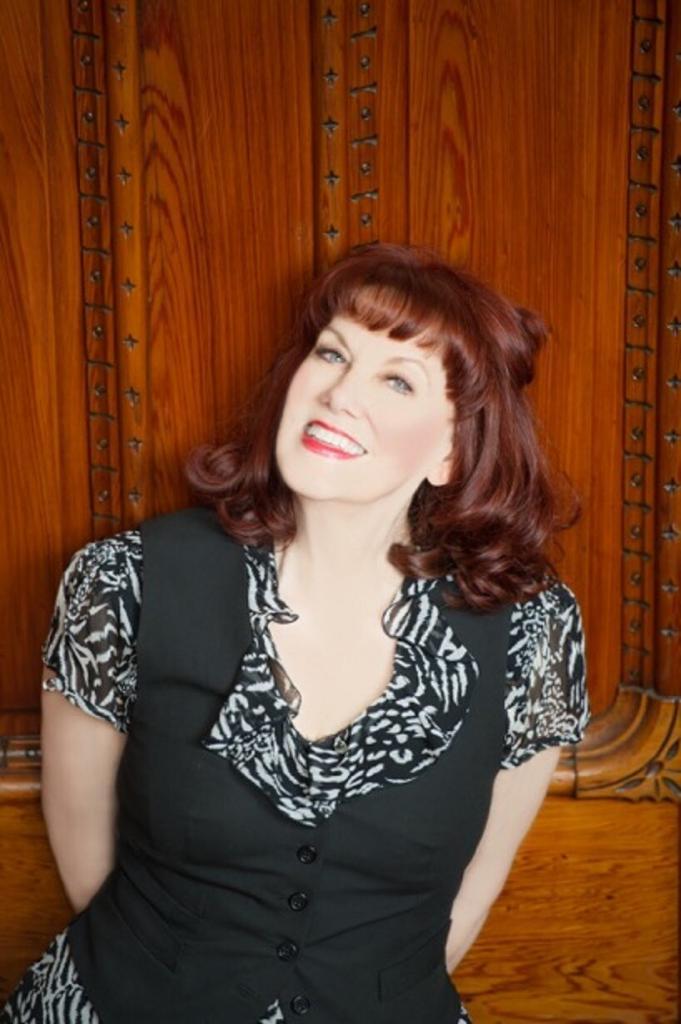
The wonderful vocalist Banu Gibson (“First Lady of the Bayou,” TST, September 2016) is a great friend and it is always a privilege to share a bandstand with her. Over the years we have discussed many vocalists in the jazz and pop genres. We hope that TST Readers will enjoy this dialogue concerning some of our favorite singers. —H. S.
Banu Gibson: Clarinetist Kenny Davern once said, “I want them to know it’s me in a few notes.” Most musicians strive for that individualist sound, but it’s easier for the human voice to be immediately recognized than a musician on his instrument.
When I first moved to New York City in 1969 I had been listening almost exclusively to Bix Beiderbecke, Paul Whiteman, Bing Crosby and Ethel Waters, and was still new to building my auditory recognition of the greats. When a recording of Louis Armstrong’s trumpet playing came on and I said, “Who is that?” my future husband looked at me as if I had just grown three heads. “It’s Louis Armstrong,” he said slowly, emphatically, and as if this relationship just might not work out. It only took a few listens to the Hot Five and Hot Seven recordings to never let that mistake happen again. As for Louis’ singing—there was no mistaking that! Generally, singers want to produce a bel canto (beautiful singing) sound, but Armstrong proved that you didn’t have to have a beautiful voice to convey heartfelt emotion and swing. By the 1920s Armstrong was a seminal figure in ushering in a new style of jazz singing.
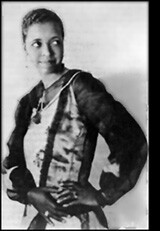
Hal Smith: You mentioned one of my top favorite vocalists: Ethel Waters. In the 1920s, her voice had a beautiful, crystal-clear tone and she had a jazzy beat, perfect diction and accurate pitch in any range. Her vocals on records such as “Sweet Man,” “Sugar,” “Sweet Georgia Brown,” and “Guess Who’s In Town” influenced a generation of singers.
BG: When I started to work at Joe the Bartender’s club in Miami Beach in 1968, I needed to find songs for my solo spot that everyone wouldn’t sing along with! That’s when I found the LP Ethel Waters’ Greatest Years. Listening to her sing, I realized she came from the old school vaudeville tradition of rolled “R”s and great diction. She had quite a range with warm low notes and a very distinctive upper register. She also had a growl or rasp she would occasionally add to a note, giving her singing an earthy quality while her upper notes sounded ethereal. When Columbia records released her recordings to both a White and Black market she became the first Black crossover artist. I loved her ability to sing the story of the lyrics. It wasn’t just words and notes. And thanks to cornetist George Finola I have a piece of her jewelry. I wear it when I’m in the recording studio.
HS: One of the vocalists who was influenced by Ethel Waters, and another favorite of mine, is Ivie Anderson. I think her records with Duke Ellington’s Orchestra are fantastic. As you said about Ethel Waters, Ivie sang the story of the lyrics—whether a lament like “A Lonely Co-Ed” or a song with an upbeat kind of feeling like “Happy As The Day Is Long.” And it’s a treat to hear her obviously having fun with the lyrics and with the band members on the famous live recording from Fargo, North Dakota in 1940.
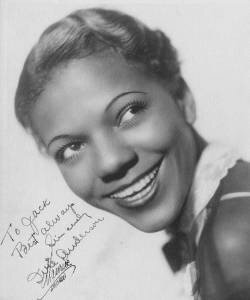
Hearing Ivie on that date, you would never guess that apparently, when she first joined the Ellington Orchestra, she suffered from stage fright! Drummer Sonny Greer helped her to loosen up onstage by sassing her as she sang…and she sassed him right back! (I like that story, but don’t have any plans to sass any vocalists I know in the near future!) I remember hearing you sing a fragment of “Oh, Babe – Maybe Someday,” which is one of Ivie Anderson’s best records. What do you hear in her sound and approach that you especially like?
BG: Ivie was a very versatile singer who sang with a simplicity that was completely unpretentious and ungimmicked. She had a relaxed sense of rhythm and on “Oh, Babe – Maybe Someday,” she sounds like she’s floating over the lyrics and stretching out the phrases. She’s got a solid two octave range. When I first heard her singing in her lower register I thought she might be a man!
At the beginning of “I Got It Bad and That Ain’t Good” she starts by singing an Eb below middle C that made me stop and re-listen. That is not a note in most female singers’ range. She makes that big jump from the second note to the third note (an octave and a step) with ease. The second time she adds a short lovely scoop to get to the topnote. She sparingly throws in vocal ornamentations, but when she does—they are well-placed.
She could also use a nasal vocal placement to cut through the band like she did on “St. Louis Blues” on the Fargo, North Dakota gig, and of course her singing on Ellington’s “It Don’t Mean A Thing (If It Ain’t Got That Swing)” is classic, along with her short scat at the end of the song.
I’ve always felt that Duke Ellington was writing melodies with instruments in mind and not the human voice. The jumps between notes in his melodies are not singer friendly but Ivie sings them effortlessly. An example of a difficult Ellington melody to sing is “Sophisticated Lady.”(1950, Yvonne Lanauze vocal)
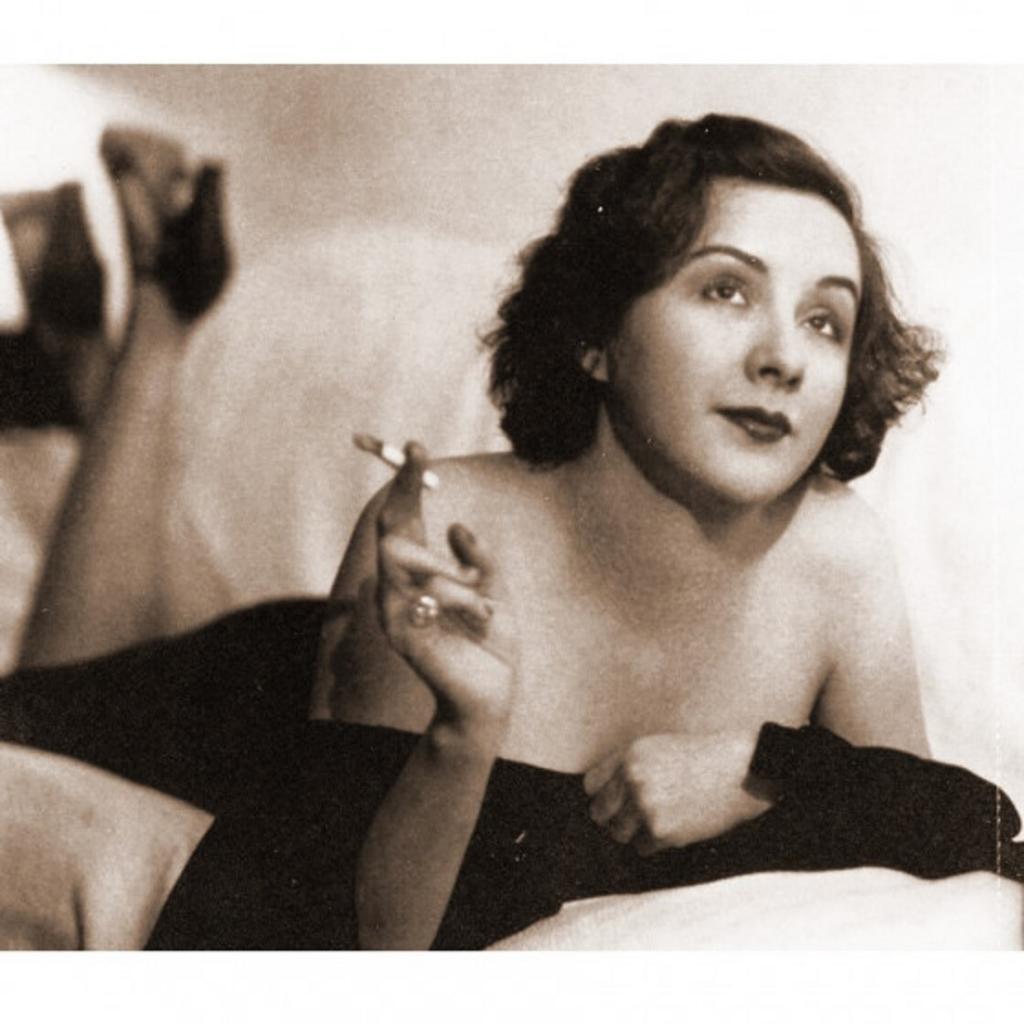
HS: Two more vocalists who named Ethel Waters as a major influence were Lee Wiley and Connie Boswell. You can hear the Waters inspiration in the way they sang low notes and their clear sound in the upper register. But both of them sound very different with their diction: “ah” for I, “deah” for dear and so on. I guess that’s a matter of “Pardon My Southern Accent!” But for my money, they were two of the best singers in jazz.
BG: I’m big fans of both Lee and Connie. I’ve been listening to recordings of Lee Wiley since I was in NYC in the early ’70s. Lee has a smoky sounding voice with a distinctive vibrato. Leonard Feather described her voice as having “a husky erotic warmth.” Scott Yanow said she has a “cool sensuality,” and Stanley Green described her voice as “pure Southern Comfort.” I like the quality of her voice from the thirties. She had a very intimate way of singing. It’s as if she is sitting next to you and whispering a musical secret in your ear.
In 1939, thanks to an idea from John DeVries, she recorded the first Songbook Series using all Gershwin’s songs. This preceded the Ella Fitzgerald songbook series by more than a decade. But for me, as she grew older her vibrato became wider and not as pleasant for me to listen to—so I always gravitated to the young Lee Wiley recordings.
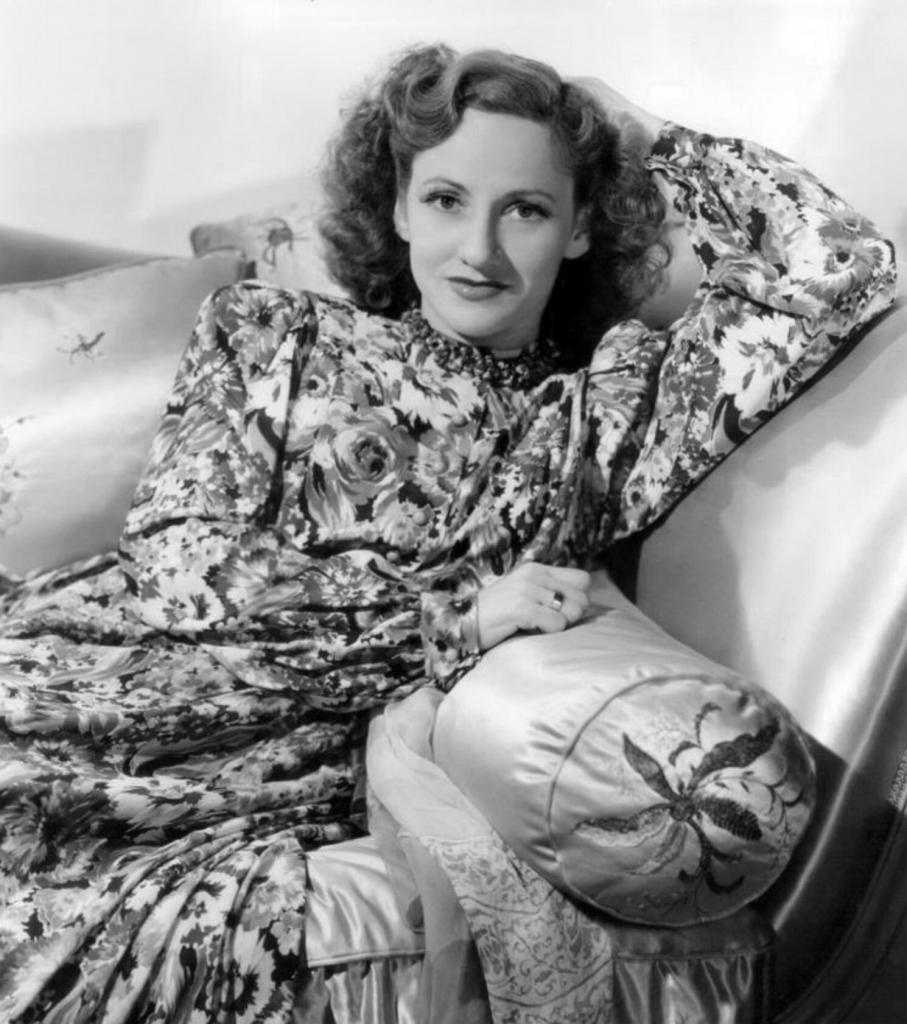
I actually wasn’t that familiar with Connee Boswell as a solo artist. I did know all the recordings of the Boswell Sisters and one of the thrills of my life was meeting Vet Boswell at Mahogany Hall in 1987 and in In October 2014—thanks to Vet’s granddaughter Kyla Titus—a Boswell Sisters Tribute took place in New Orleans and I was flattered to be included as the only solo artist. ANYWAY…when I started to listen to Connee’s solo recordings in the 1990s, I realized how similar our styles were. (At least I thought so).
I did a show at Le Chat Noir, a cabaret venue here in New Orleans, where I started a song with my windup Victrola onstage playing a 78 of Connee singing “The Nearness of You.” After the first eight bars, pianist David Boeddinghaus sneaked in and I sang with Connie for a few bars and then lifted the arm off the Victrola to continue singing. I sang up until the end of the bridge. Then a spotlight came back on the Victrola and a prerecorded Connee sang the rest of the song. The song finished, and in the dark I said, “Ladies and Gentlemen Miss Connee Boswell.” I loved that I got to pay tribute to her singing and to the lady.
Now as for being a singer, because she was also a musician, she was respected by and worked with the greats: the Dorsey Brothers, Bunny Berigan, Joe Venuti and Eddie Lang, and Arthur Schutt. She has a pure sound. Her notes sound healthy. It doesn’t sound like there is any vocal abuse. I love the length of her vibrato and her head voice sounds like a natural extension of her chest voice. If you listen to her V-disc of “Way Down Yonder in New Orleans” she has a bounce and a lift to the notes she sings and she SWINGS! Oh, and of course she sings the verse. Amen.
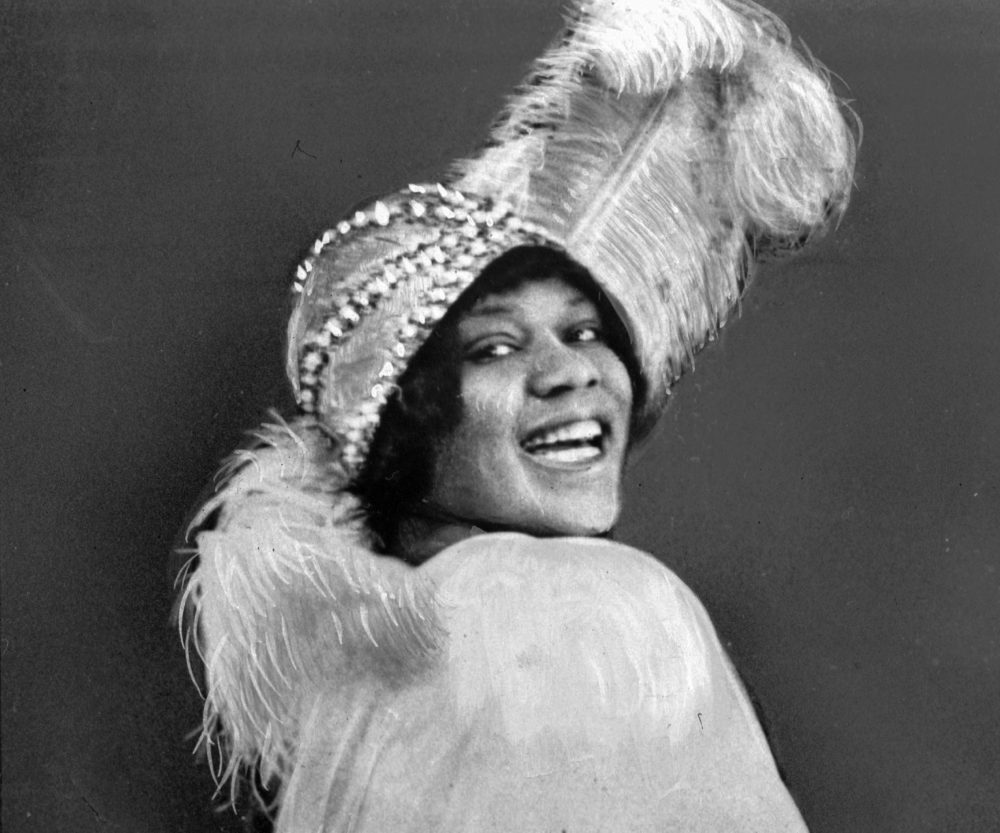
HS: At the other end of the vocal spectrum, there’s the “Empress of the Blues”—Bessie Smith. (I’ve never understood why she wasn’t referred to as the Queen of the Blues)! She had a truly majestic sound. Bessie sang with such volume that her voice could fill the largest room without having to use a microphone. She had that wonderful vibrato like a horn player; knew exactly when to slur or enunciate the lyrics and she made you believe that whatever the subject of the song happened to be, she had lived it!
BG: Yes! She has such big fat notes! Her entire body was her resonator. She is the ultimate blues singer for me. Matter of fact, even when she is singing a pop song like “After You’ve Gone” it still sounds like she’s singing the blues! One of my favorite recordings of hers is “Muddy Water.” I loved singing that song, but my connection deepened—and boy did it change—after Hurricane Katrina.
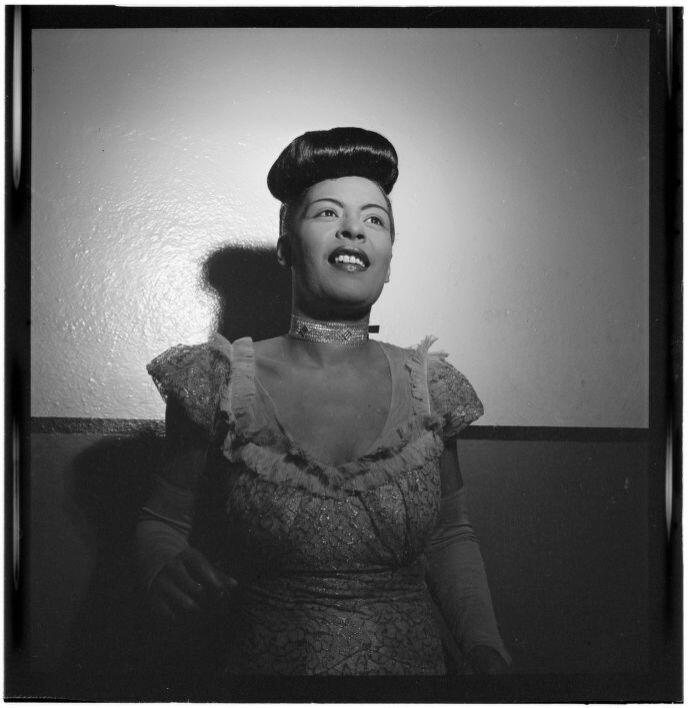
HS: Billie Holiday had a totally different sound and approach from any other vocalist. As a stylist, she was a great influence on other singers right up to the present time. Her phrasing was behind the beat, but she still made it swing—like a good horn player. When she emphasized certain words in the lyrics to good effect, it reminds me of the way Lester Young played tenor sax. That’s no surprise, since you can hear how “Lady Day and Pres” inspired each other on all the recordings they made together. But from time to time, you can also hear the pain in Billie’s voice—even when she was singing a phrase like “white clouds hang in the air, like toy balloons.”
BG: Billie is another immediately recognizable voice. For some people Billie’s singing is an acquired taste. Her sound is much more nasal. Billie also does a LOT of scooping and sliding into notes, and she falls off notes at the end of phrases and also sometimes slides up!
I’ve been told that horn players have certain pitches that resonate better than others on their instrument. That’s the same for vocalists. When I’m holding one of those notes, I can feel it. Everything is vibrating and the note sails out. Singing involves a lot of body parts to produce a sound. You use your diaphragm, your larynx and the mask of your face to get a good resonant note. I think those resonating notes for Billie were G, A and Bb above middle C. Billie hangs around those notes a LOT when she is singing. Billie also makes jumps UP to different pitches where most other singers would jump down.
Singers joke about “if you want to learn the melody to a song don’t listen to Billie Holiday!” The most obvious example is Billie’s rendition of “Them There Eyes.” For the first 12 notes she just hangs on an F:
Many of the songwriters of the Great American Songbook disliked jazz singers for just that reason! They spend a great deal of time getting the perfect melody combined with the perfect lyric and then some jazz singer comes along and tosses all those notes up in the air and changes everything. As one famous songwriter bemoaned “Could you sing what I wrote JUST ONCE?!?”
Unfortunately, a number of younger singers are incorporating some of the less pleasing sonorities of Billie’s sound into their singing. They seem to think singing with a pinched nasal sound means you’re singing jazz! I believe that you have to completely absorb everything about a singer you like. You should be able to imitate their sound and phrasing but in the end you must come out of the process sounding like you.
In my teens I heard a recording of a young Nancy Wilson who had many Billie affectations but they soon disappeared as she found her own voice. Billie’s voice reflected her own pain and approach to lyrics. You can’t copy pain; you have to bring your own life experience to a song. When I first put my band together most of my songs were upbeat and happy because I was upbeat and happy. Initially I had a hard time with singing “Lover Man” because the lyrics were “I don’t know why, but I’m feeling so sad” and I was seldom sad. But it didn’t take long for life to start beating me up and sad songs came a lot easier (LOL)!
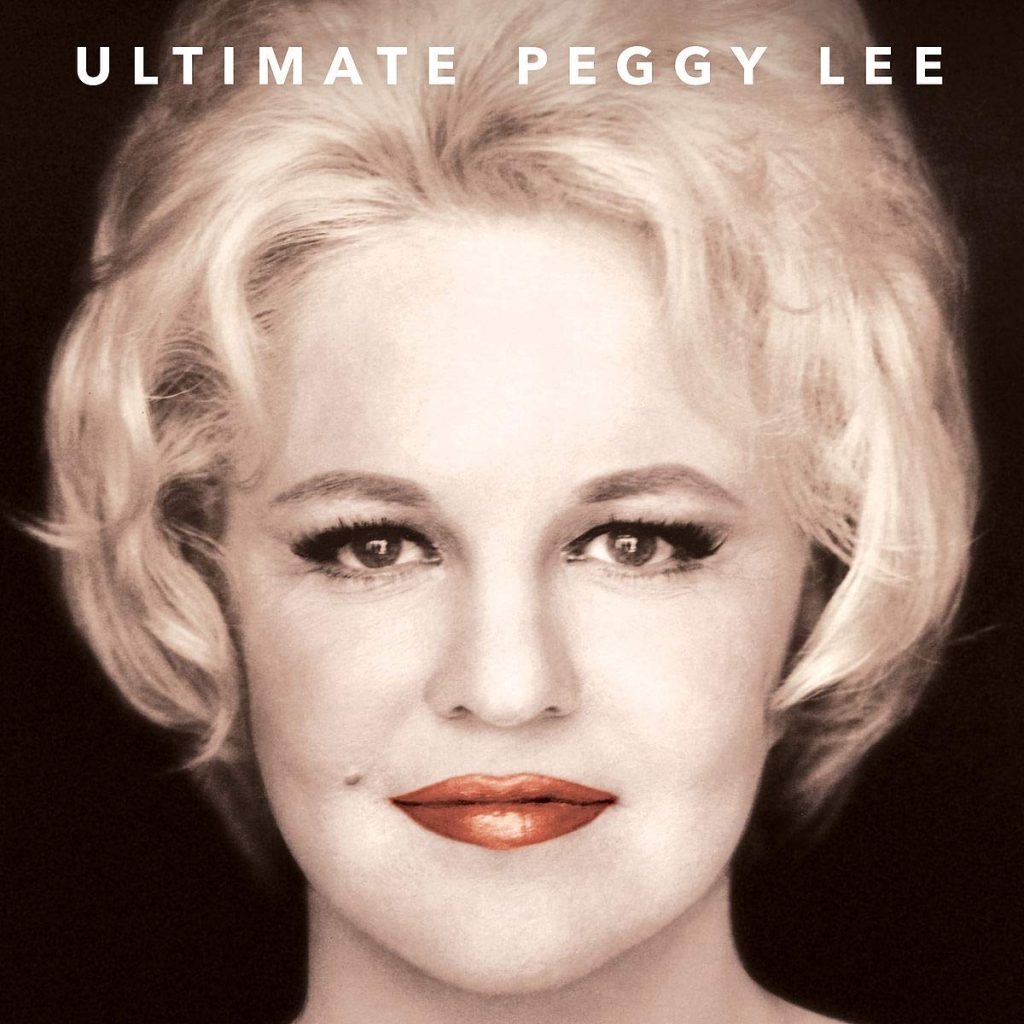
HS: You are currently directing a show in New Orleans based on the music and career of Peggy Lee. She had a beautiful, pure-sounding voice and sang with a terrific, swinging beat. She was greatly admired by Frank Sinatra, Duke Ellington, Count Basie and many other major figures in jazz and pop music. Without giving away the content of the show you are involved with, what can you share with the readers about Peggy Lee’s singing and her career?
BG: Well, the print version of Syncopated Times would run out of trees if I said all I wanted to about Miss Peggy Lee! One of my favorite lines in the show is: “Peggy Lee did for singing what Jane Russell did for a sweater!” Duke Ellington said, “If I’m the Duke, man, Peggy Lee is the Queen.” Local New Orleans singer/actress Lisa Picone Love did her Lisa Sings Lee show ten years ago at a local cabaret. Since it is Peggy’s Centennial she decided to bring back the show at Rivertown Theatre—a larger venue. I directed the first show and Lisa was kind enough to ask me to direct her revival. She wrote an excellent script with Peggy’s famous hits interwoven into the story.
Not only was Peggy a wonderful singer and a great songwriter, but she was also a savvy business woman. Peggy inspired me to work both the artistic and business side of music.
There are so many songs I love that Peggy Lee sang, but at the moment I like listening to her singing Cole Porter’s “Do I Love You?” with George Shearing’s Quintet from a 1959 album called Beauty and the Beat. What a great album title, right? She just stretches out vocally over a swinging rhythm section. She is so effortless you don’t realize what a groove she establishes. She is also SO conversational. And it is where she DOESN’T take a breath that singers should study.
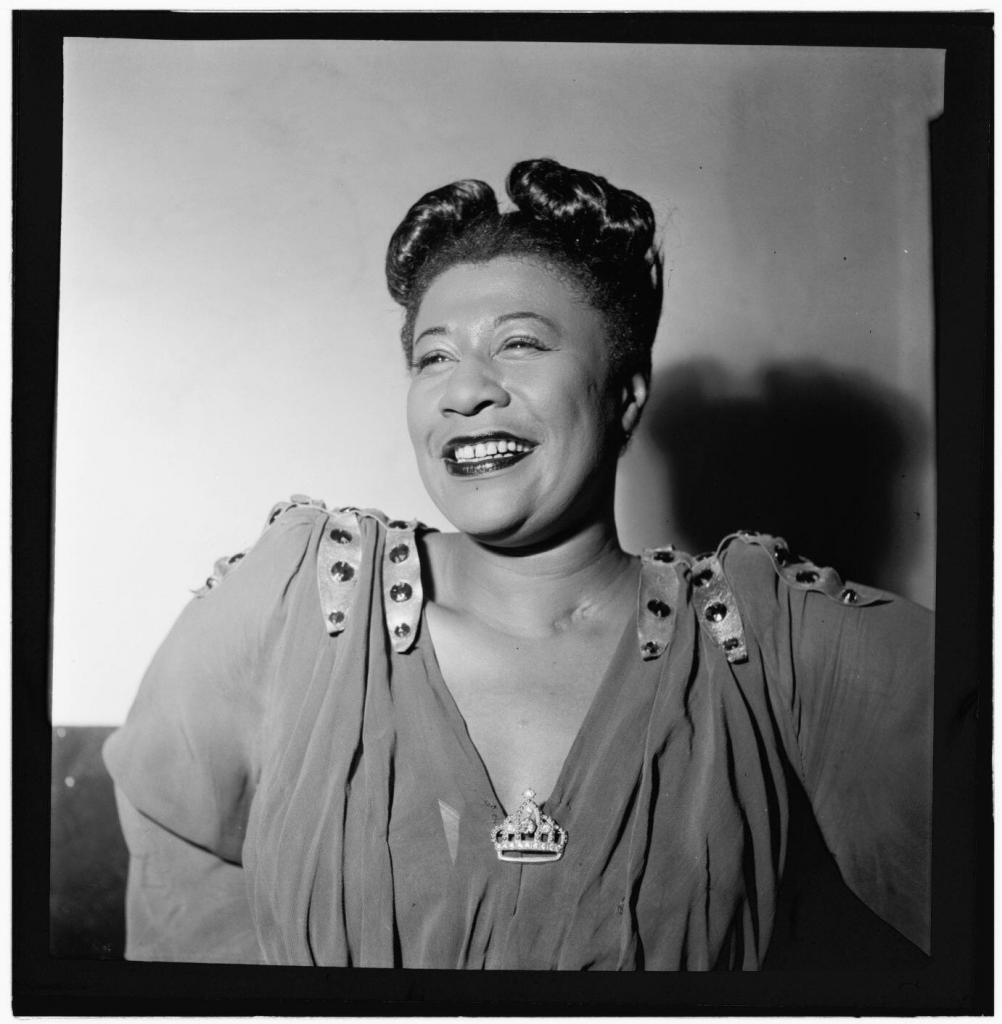
HS: We should definitely talk about Ella Fitzgerald. She had everything—tone, range, perfect pitch, swing—and she was at ease in any musical setting you can imagine, whether singing with the Firehouse Five Plus Two on Bing Crosby’s radio show, touring with Dizzy Gillespie or appearing alongside other vocalists like Frank Sinatra, Dean Martin, Nat King Cole, and Dinah Shore.
The Ella Fitzgerald recordings I’m most familiar with are those she made with Chick Webb, and the later sessions with Louis Armstrong. She sounded terrific with Webb in the 1930s, but I think she was even better with Louis in the ’50s.
BG: Ella is game, set, match. Ella said she only had one influence and that was Connie Boswell. Ella loved jumping up or down the octave which is not the most user friendly thing for a singer to do, but it was one of Ella’s signature vocal effects. And who would have ever thought that her duets with Louis would be so phenomenal! Their voices sound great together but if you would have asked me if that session was a good pairing before I heard it, I might have been doubtful.
One of my favorite recordings of Ella’s is “Blue Moon” with a wonderful arrangement by Buddy Bregman. I was looking for a new song to add to our symphony show and wrote to the Ella Fitzgerald Foundation and was able to rent her chart to perform! What a thrill to stand in front of an orchestra and sing to Buddy’s arrangement as I heard Ella singing in my head. We’ve included a link to Ella’s recording of that arrangement.
| Ella Fitzgerald Acc. By Buddy Bregman Orchestra | Blue Moon LA, Aug 29, 1956
|
20228-3 | Verve MGV4023 | MP3 |
HS: Earlier, you mentioned some outstanding male vocalists. If we could change the subject to “guys who sang,” I would be interested in what you have to say about them!
BG: For me, the three great male pop and jazz vocalists who influenced 20th century singing were Louis Armstrong, Bing Crosby and Fred Astaire.
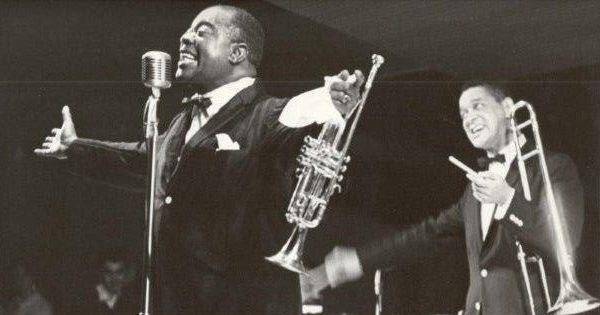
Armstrong’s singing is a musical extension of his playing with words. His vibrato on his horn at the end of a phrase is the same as his vocal vibrato at the end of a phrase. His raspy voice forces some of his phrasing choices. But it was his scat singing that opened up a new world of vocalizing for many singers. Although other singers had scatted on recordings before Armstrong, it was his driving improvised melody along with his nonsense syllables that gave his “Heebie Jeebies” scat chorus its novelty. The sound of Armstrong’s voice is part of our American musical DNA of the 20th century.
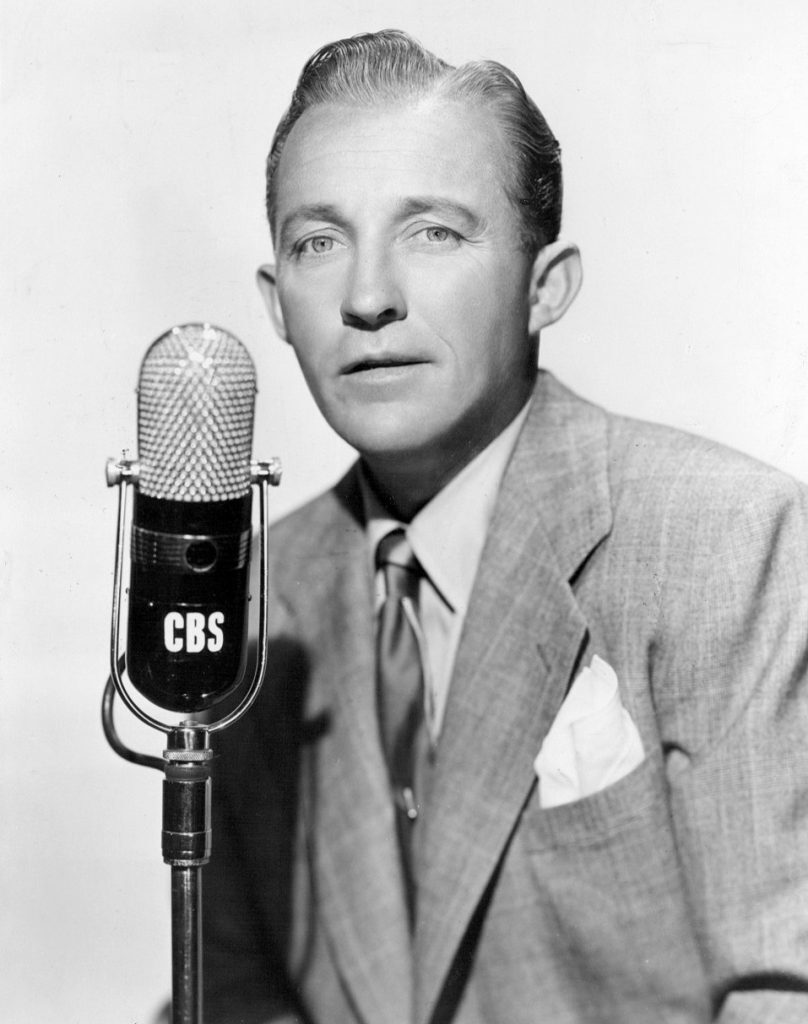
Bing Crosby had a beautiful sound and was a baritone when most male singers in the 1920s were tenors. Bing swung and his singing with the Rhythm Boys was so hot and rhythmic it was hard to sit still when you listened to them. The Rhythm Boys’ blend summed up for me the sound of the twenties. As Bing matured his vocal sound was like slipping into cozy slippers and warm sheets on a rainy night. As America grew up, his voice led the way from the hot jazz of the Twenties, to the popular songs of the Thirties, to the comforting voice singing us through the war and fun “Road” movies of the Forties, to an elder statesman and vocal grandfather who would tuck us in at night.
Fred Astaire introduced more famous popular songs than any other singer. He was many composers’ favorite vocalist. With an easy, relaxed swing and good enunciation, each song he introduced would receive a master’s touch in style.
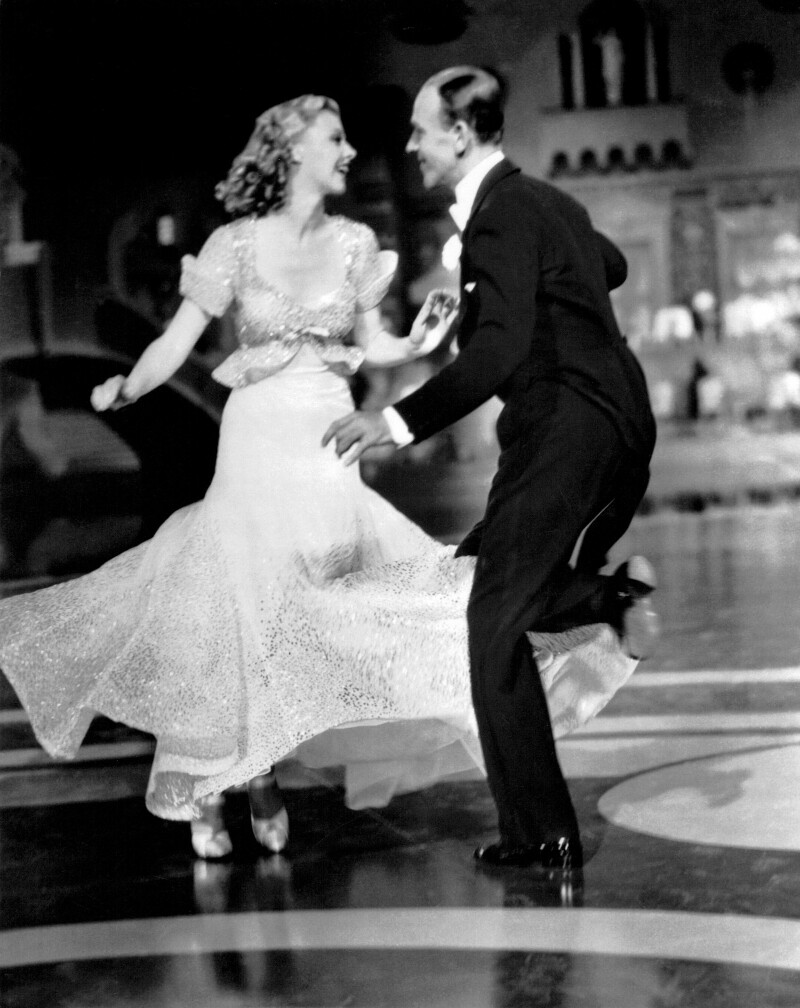
It was Fred’s tap dancing combined with his ability to play drums and piano that gave him a sense of rhythm and phrasing that were a part of his musicality. I know Fred is known as a great dancer but his singing has taught me a lot! Take his recording of “Puttin’ On The Ritz.” He easily handles the unusual rhythms at the top of the chorus. He sings the syncopation as written on the first three measures but then stretches out on the word “sits,” and lays back on the end of the title “the Ritz.” He sings the rollercoaster bridge straight which gives the upcoming last A section more contrast when he’s back into the syncopation. Then when he comes back to sing his out chorus, he sings a completely different rhythmic pattern that makes you wonder if he is going to come out in the right place with the music and lyrics! His “feel” is subtle and swinging.
The Astaire Story—a two CD set recorded in 1952 with Oscar Petterson on piano, Flip Phillips on tenor sax, Charlie Shavers on trumpet, Barney Kessel on guitar, Ray Brown on bass, and Alvin Stoller on drums—shows just how timeless Astaire’s singing is.
HS: I certainly won’t dispute what you said about Louis Armstrong and Bing Crosby. They are icons in our world, and, to quote Duke Ellington, “beyond category.” I am less familiar with Fred Astaire’s singing, and tend to think of him more as one of the greatest dancers. Based on your enthusiasm for his vocals, though, I’m going to check out his records!
In addition to Louis and Bing, my two favorite male vocalists are Jack Teagarden and Red McKenzie. Jack had the same relaxed, easygoing approach with a vocal that he used with the trombone. And there are quite a few times when you can actually hear the smile in his voice –like on some of the duets with Louis and with Fats Waller. He was a fantastic blues singer, too.
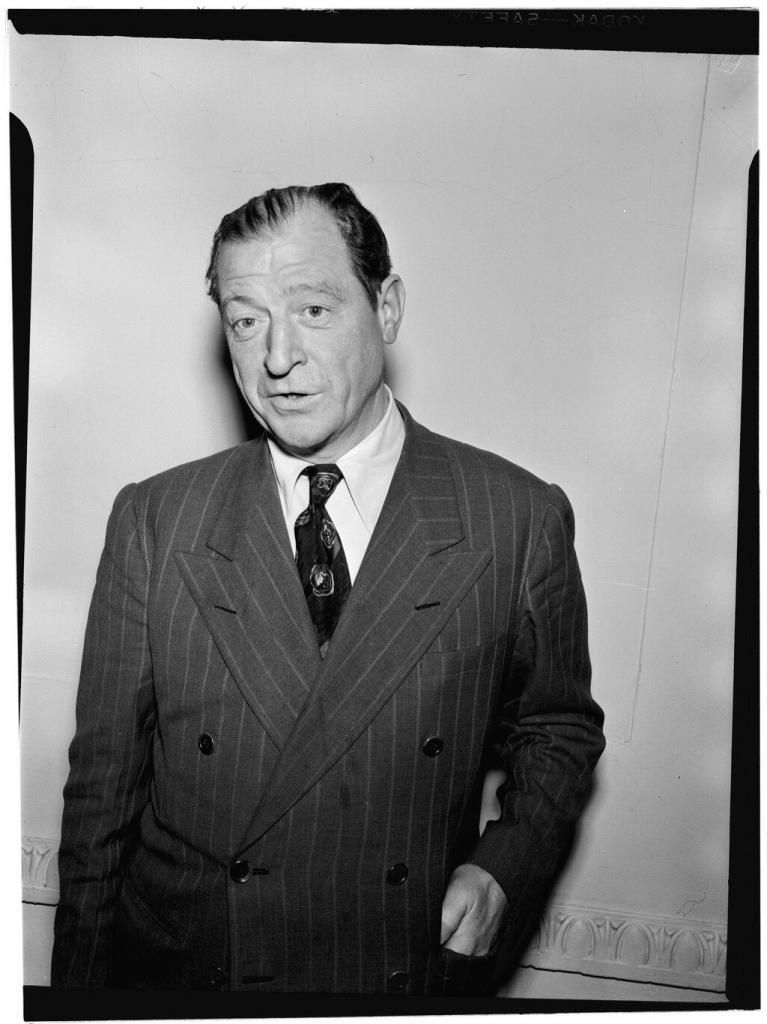
Red McKenzie, on the other hand, always sounded deadly-serious—even when singing silly lyrics like “Exactly eight o’clock. Say, where’s my other sock?” (on “I Gotta Get Up and Go To Work” with Adrian Rollini). I really like the deep sonority of Red’s voice, and his quirky phrasing—falling behind the beat, then trying to fit too many words into one measure! He made some wonderful Chicago style recordings with the Jungle Kings, Chicago Rhythm Kings, Bud Freeman, and Red Nichols in the late ’20s. His own Mound City Blue Blowers started recording even earlier, and continued to make records well into the ’30s. He also made quite a few memorable sides with the Condon Mob. I like Red’s comb-and-tissue playing too. Based on his ideas and his phrasing, I think he would have been a formidable trumpet player or saxophonist.
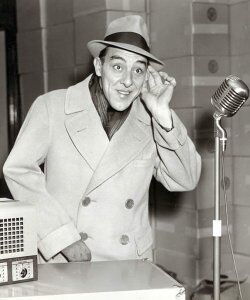
BG: I must admit I have always been fascinated with musicians that sing. They seem fearless and no matter how bad the vocal quality, the audience forgives ALL. If you are holding an instrument, somehow your lack of vocal abilities aren’t held against you! Wingy Manone and Billie Holiday studied at the same school of “who cares what the melody is?” On Wingy’s recording of “I’ve Got My Fingers Crossed,” like Billie, he just hangs on one note.
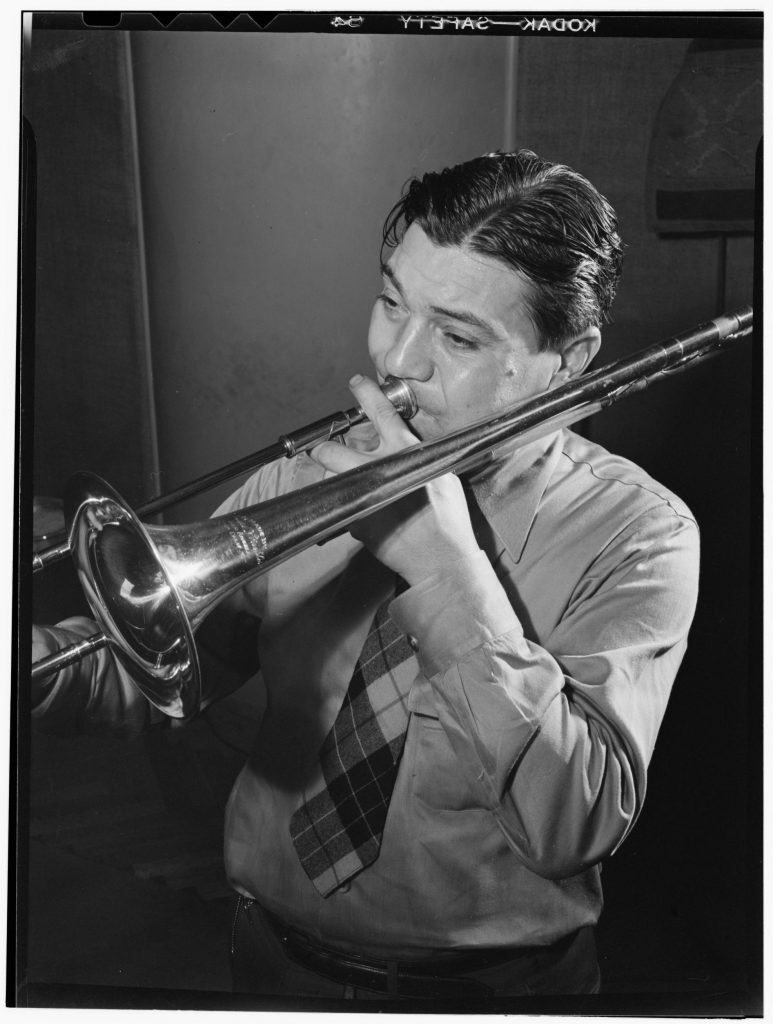
I love Teagarden’s singing. His singing voice was the same as his speaking voice; there just happened to be a note attached. He sounded just the same singing or speaking. That makes his authenticity shine through. His laid-back Texas drawl was especially poignant when he sang a lament like “Misery and the Blues.”
As for Red McKenzie I much prefer to watch him wiggle around in the 1929 Vitaphone short where he plays “I Ain’t Got Nobody.” His moves make me think he’s going to break out in a more exaggerated dance called “snake hips.” I actually haven’t listened to enough of Red McKenzie to make an enlightened comment, but I did notice that he tends to have the same length of vibrato at the end of every phrase when he is singing “Dinah.”
When I started the New Orleans Trad Jazz Camp, the second year—in 2011—I did a special workshop class for instrumentalists who wanted to sing or did sing. I was stupefied at the difference in attitude between someone who wanted to be just a vocalist (and was scared to death) and the instrumentalist (who was fearless) and just wanted to sing an occasional chorus.
When I was nineteen, trombonist Sonny Helmer came into my life when I was working for Your Father’s Moustache in Miami Beach. He told me a story of a director who saw him perform, loved his persona, and got him an acting job on the TV show Death Valley Days. The director thought he would be a natural as a bit player in one of the episodes, but when Sonny got on the set he was nervous and constantly blew his lines. The director pulled Sonny aside and said, “What’s the matter? You were such a natural when I saw you onstage. Why are you having such trouble with everything?” Sonny told him that while he was holding his trombone he always felt confident and without it, he didn’t. “Have you got your trombone with you?” the director asked. “Yep, of course” Sonny replied. “Well GO GET IT!” the director commanded. Sonny got his trombone and held it off camera and got all of his lines in one take. That’s what I mean: there are magical powers hiding behind an instrument!
I guess the ultimate pairing of two untrained voices would be Teagarden and Armstrong singing “Rockin’ Chair.” It’s conversational, and brings the jazz influence and knowledge of when to fill into the give-and-take of musical phrases. It’s the perfect combination of singing and jazz.
Wow! There are SO many other vocalists to talk about, it seems we have barely scratched the surface: Mildred Bailey, Fats Waller, Cab Calloway, and Jimmy Rushing; not to mention the more contemporary vocalists like Anita O’Day, Frank Sinatra and Tony Bennett. The list goes on and on!
I must say that I have enjoyed our talk about vocalist and jazz and our next conversation must be over cocktails in New Orleans at my favorite watering hole! …..and y’all are invited (but you’re picking up the tab! LOL).
HS: As Eddie Condon would say, “How would you like your water? Hot or cold?” Seriously, I’ll be happy to pick up the tab the next time we get together in Dear Old New Orleans. Until then, thanks a million for all of your insights regarding this diverse group of vocalists!
Visit Banu Gibson online at banugibson.com or learn about her New Orleans Traditional Jazz Camp at www.tradjazzcamp.com. Hal Smith is an Arkansas-based drummer and writer. He leads On The Levee Jazz Band and works with a variety of Jazz and Swing bands. Visit him online at halsmithmusic.com.
Selected YouTube Links
Ethel Waters
Ivie Anderson
I Got It Bad and That Ain’t Good (at 0:31)
Bessie Smith
Connee Boswell
Way Down Yonder In New Orleans
Lee Wiley
Peggy Lee
Ella Fitzgerald
Ella Fitzgerald & Louis Armstrong
Bing Crosby
Excerpt from “The King of Jazz”
Louis Armstrong
Heebie Jeebies (Vocal at 1:20)
Fred Astaire – Putin’ On The Ritz (at 0:38 and 1:48)
Wingy Manone – I’ve Got My Fingers Crossed (at 0:44)
Billie Holiday – Them There Eyes
Jack Teagarden & Louis Armstrong
Jack Teagarden Misery and the Blues
Red McKenzie
The Trouble With Me Is You (at 0:47)
Hal Smith is an Arkansas-based drummer and writer. He leads the El Dorado Jazz Band and the
Mortonia Seven and works with a variety of jazz and swing bands. Visit him online at
halsmithmusic.com























